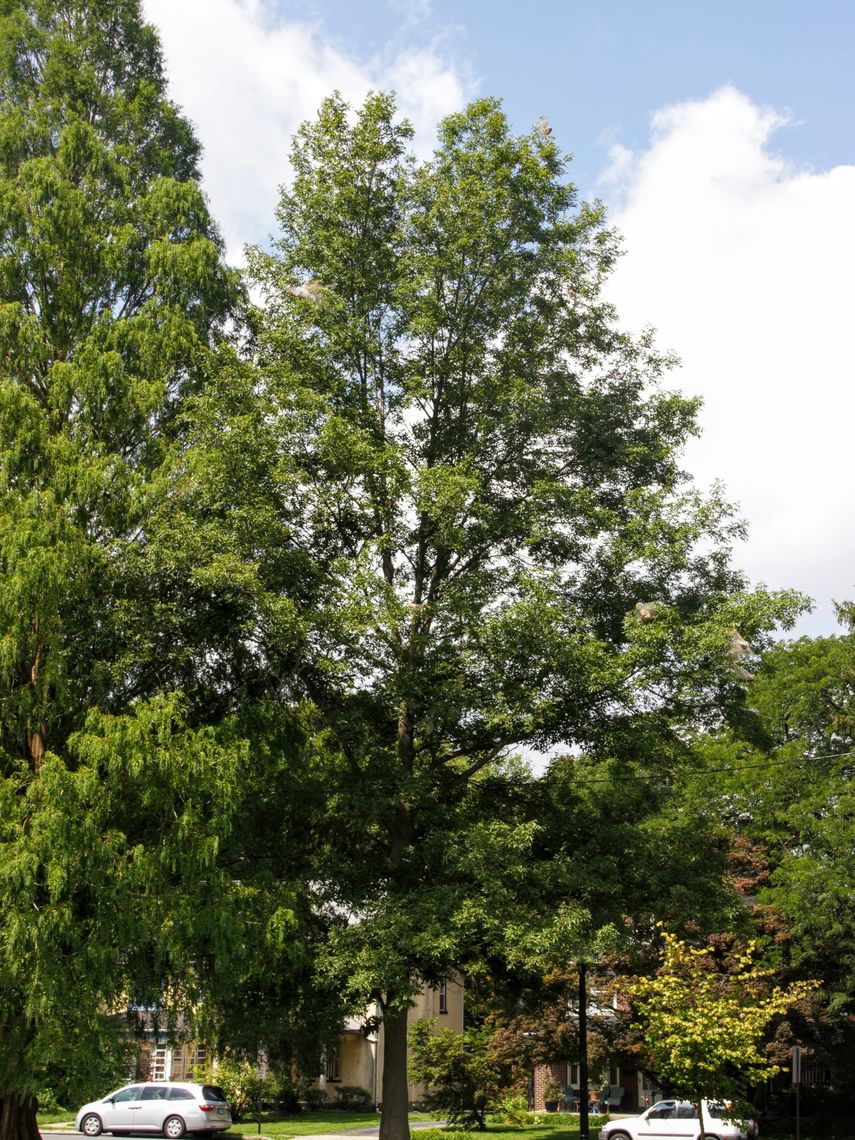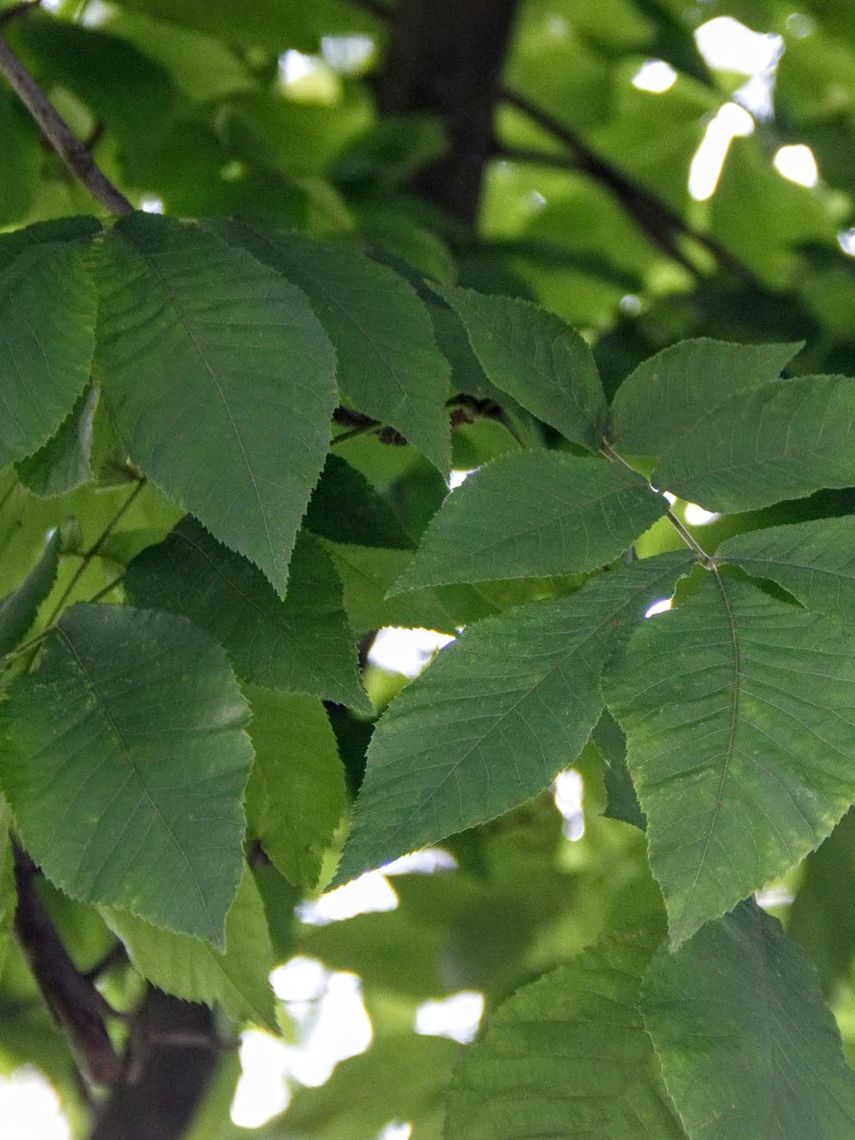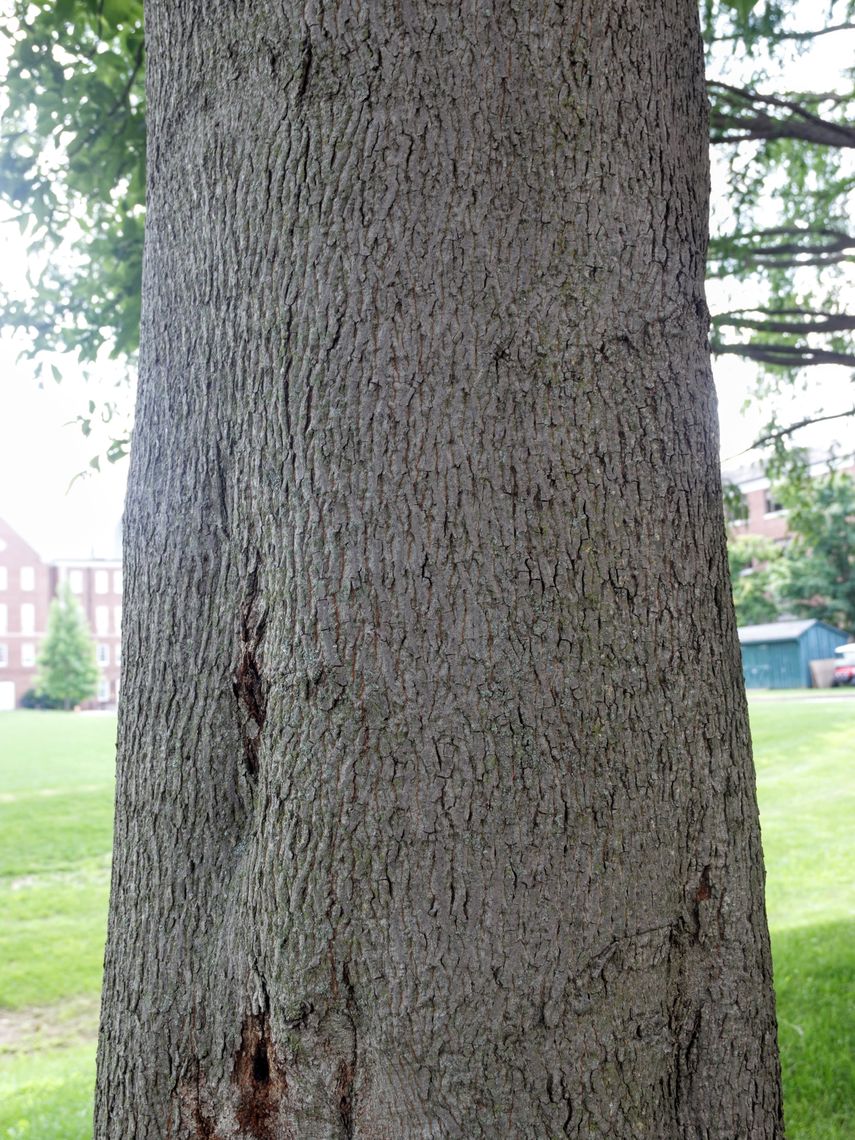Mockernut Hickory (Carya tomentosa)
Like the other trees in its family, the mockernut hickory produces edible nuts. However, it takes this species about 25 years to begin producing them. Furthermore, these nuts are often difficult to remove from their shells, hence the tree's common name. Mockernuts are therefore more often eaten by squirrels, chipmunks, rabbits, raccoons, and black bears. This tree also attracts birds. The tree's leaves are a dark yellow-green and consist of 5-7 teardrop shaped, toothed leaflets, arranged with two leaves on either side of the stem with one on top.
Family: Juglandaceae (Walnut)
Characteristics: The dark yellow-green leaves are composed of 5-7 ovate, toothed leaflets. Each leaf is 3-6 inches long, arranged in an odd-pinnate formation (leaflets attached in pairs along a stem with one on top). In the fall, leaves turn to a prominent yellow. Flowers appear as drooping male catkins and short female spikes. The female flowers give way to edible nuts, which are encased in a thick round husk. Bark is dark gray and develops furrows and flattened ridges with age. This tree has a rounded shape. It grows 60-80 feet tall and 40-60 feet wide.
Foliage: Deciduous (leaves lost seasonally)
Geographic Origin: North America (native)
Cultivation Notes: Requires low maintenance. Does best in full sun to part-shade, and is intolerant of full shade. Prefers acidic, moist, and well drained soil. Needs an ample amount of room to grow. It may also be difficult to transplant due to its deep taproot. It takes 25 years for this species to begin to produce fruit.
Number on Campus: 1
Sources: Dirr, Morton Arboretum, Missouri Botanical Garden



